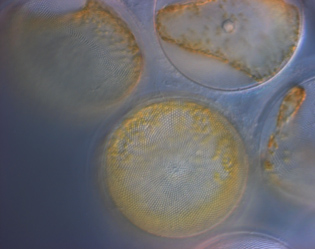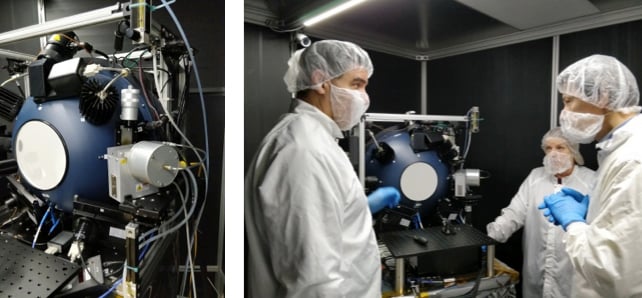Laser-Driven Light Source (LDLS™) for Calibration
Author: S. Gunnell, M. Steinberg
Energetiq Technology’s Laser-Driven Light Source (LDLS™) technology is ideal for optical component testing and calibration applications. This application note will describe why scientists at the NASA Goddard Space Flight Center selected the EQ-400 LDLS to calibrate a detector on a hyperspectral telescope that will be used to examine our planet’s ocean.
Key Advantages of LDLS:
- Extremely low noise and long lifetime
- Small plasma size for efficient coupling
- High radiance across the broad spectrum
NASA PACE Mission to Monitor Global Phytoplankton Distribution
The EQ-400 will be the calibration light source for a detector featured on the PACE (Plankton, Aerosol, Cloud, ocean Ecosystem) mission satellite, scheduled for launch in 2022. The primary science instrument planned for PACE is an advanced optical spectrometer called the Ocean Color Instrument (OCI). The OCI will measure the color of the ocean using hyperspectral radiometry from the ultraviolet (350 nm) to near-infrared (885 nm).
The OCI will enable NASA scientists to study the global phytoplankton distribution and understand the complex relationship between ocean ecosystems, atmosphere, and climate. The color of the ocean is determined by the interaction of sunlight with substances or particles in seawater, such as the green chlorophyll present in most phytoplankton species. [1]
Previous NASA telescopes have taken on similar missions however PACE is the first hyperspectral satellite and will give scientists the ability to distinguish between many more types of phytoplankton than before. Phytoplankton use carbon dioxide from the atmosphere to perform photosynthesis, a process which releases oxygen into the ocean and atmosphere. The information derived from the study of various species of phytoplankton will ultimately give scientists clues to predict where the carbon is stored and how rising carbon dioxide levels in the ocean are affecting phytoplankton. [2]

Ideal Broadband Light Source for Calibration
The EQ-400 provides uniform, high brightness light from 170 nm – 2100 nm. This broad spectral output is a critical differentiator from other traditional light sources available on the market. Calibration scientists previously used multiple lamps (such as Deuterium, Tungsten/Halogen, Xenon-arc) to cover this broad range.

Figure 2: NASA scientists paired the EQ-400 LDLS with an integrating sphere to ensure uniform output.
Another key factor in the decision to use the EQ-400 rather than another source is that it has typical radiance greater than 100mW/mm2.sr.nm. With spectral power greater than 10mW/nm coupled into a 500 µm aperture, the EQ-400 is an ideal source for applications requiring high power in addition to the high brightness characteristic of Energetiq’s other LDLS products.
Calibration light sources must be dependably precise and Energetiq’s Laser-Driven Light Sources have excellent spatial stability, 5x to 10x better than traditional light sources such as xenon lamp driven systems. The EQ-400’s 300 µm x 800 µm FWHM Xenon plasma allows users to efficiently couple the EQ-400 with many optical components such as an OAP pair or monochromator.
The EQ-400 is a low noise source on both short and long time scales, with less than 0.1% Pk-pk/mean output flux variation over 10 seconds and bulb lifetime greater than 10,000 hours during which total output is expected to drop just 10%. This means users can repeatedly get clear measurements with high signal-to-noise ratio while avoiding frequent bulb replacement, recalibration, and costly instrumentation to monitor and correct for instability.
With lamp house dimensions of 135.6mm x 144.9mm x 56mm and weighing in at just 2.7kg (6.0 lb), the EQ-400 is impressively small and can be easily integrated into complex systems.
Mention of the NASA PACE Mission in this application note does not constitute an endorsement and/or recommendation.
Sources
1. Werdell, Jeremy. “Ocean Color Instrument.” NASA PACE - Ocean Color Instrument, NASA Goddard Space Flight Center (GSFC), 1 Mar. 2018, pace.oceansciences.org/oci.htm
2. Hille, Karl. “Taking Stock of Phytoplankton Populations in the Pacific.” NASA, NASA, 3 Feb. 2017, https://www.nasa.gov/feature/goddard/2017/taking-stock-of-phytoplankton-populations-in-the-pacific


